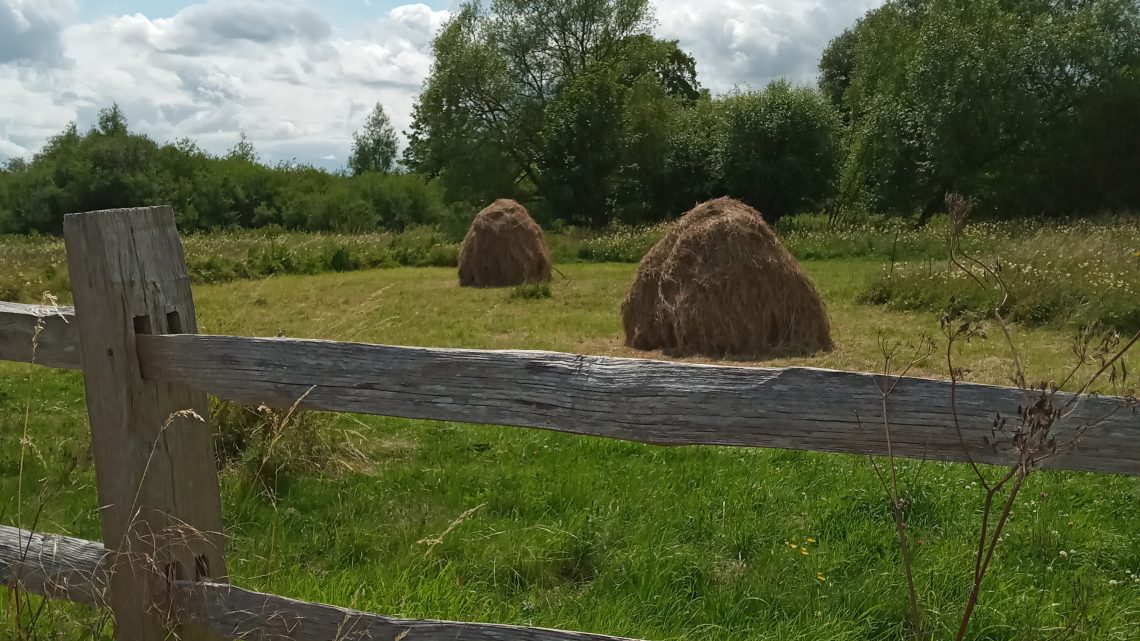Hay and Thistles
2 September 2023Wolvercote Green is an example of lowland hay meadow grassland, a habitat which has become rare in England as agriculture has become industrialised. It was part of the Meadow till it was isolated by the Oxford Canal in about 1789, and is managed in conjunction with Natural England as part of the Port Meadow/Wolvercote Common Site of Special Scientific Interest. Five species of orchid are regularly found there, and in the spring there are swathes of cowslip and the less conspicuous adder’s tongue fern.
Yellow rattle, which is parasitic on grasses, is common in the summer, as is meadowsweet – the latter perhaps too common, to the point of crowding out other species.
We are addressing this by improving the drainage and by timing the hay cut before the meadowsweet sets seed. This year we’ve been fortunate to have the hay scythed, stacked and removed by Michael Buck and his team – it will be used as winter fodder for cattle. Later on cattle will graze the “aftermath” (grass regrowth) which helps to open up the sward and prevent excessive nutrient accumulation. Meanwhile, on Port Meadow/Wolvercote Common, thistle presents another problem. Creeping thistle and spear thistle are both considered “injurious weeds”, and landowners are required to control their spread. Large areas of the Meadow are mown in the summer, to cut down the thistles before they set seed – fortunately they are not a problem on Wolvercote Green.



